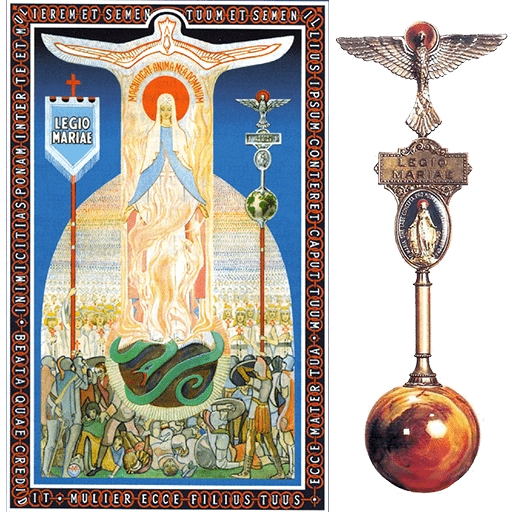November 2021 Allocutio
“The Scourging At The Pillar”
Fr. Paul Churchill
Some of you may be familiar with the work of Hans Urs von Balthasar, The Threefold Garland (original title Der Dreifache Kranz), a reflection on the 15 mysteries of the Rosary. This theologian so impressed Pope (St.) John Paul II that he made him his theologian and nominated him a Cardinal. Pope Benedict and Bishop Robert Barron have spoken highly of him also.
The work itself is obviously a reflection of prayerful meditation on the Rosary. Von Balthasar’s thinking is concentrated and deep and so has to be given time but if you stay with him you will get some value from meditating with him. I was myself particularly touched by his meditation on the 2nd sorrowful mystery, the Scourging at the Pillar. Let me quote it in part and hope I do not distort too much his reflection:
“Why was Jesus scourged? … This is a preparatory measure for the crucifixion. … Pagan soldiers (scourging was primarily a military punishment) often thrashed their victim to death with sophisticated instruments whose straps were provided with bits of bone or lead which often succeeded in exposing the internal organs …
“What God the Father is holding in his hand is the Lamb of God, which takes upon itself the sin of the world, truly and bodily …the sufferings which are being knocked into the body of Jesus are in truth the sins of the world … It contains my sins too, which in turn are innumerable. If a sin, which is a palpable reality, is remitted by absolution, it simply does not resolve into nothingness; through the alchemy of divine love it dissolves into the suffering of Christ …
“At the scourging it is not an ordinary physical suffering which is administered to the God-man, but a suffering which could only take place in him, which can only be borne by him … only by taking us up in this corporeal way into his flesh and blood that he can then communicate to us his flesh and blood as being our incarnate reconciliation: the ‘Body delivered over for us’ and the ‘Blood poured out for us’ …
“The body that takes upon itself the sin of the world is a ‘fruit of your body’ as the Hail Mary prays. … For this reason the Mother’s body cannot help but feel what is done to her ‘fruit’. Because in a mysterious way Mary communes with the sufferings of her Son, she experiences in her own manner what is the sin of the world. Being sinless, she has no direct contact with the world’s sin, but she recognises its true reality reflected in the body of her Son, where sin, which in itself is always a lie and a mask, shows its real face. Paul can say that he suffers for the Church in his body what is still lacking to the sufferings of Christ (Col 1:24). So if the Lord reserves for his chosen one a sphere of co-suffering within his own all-sufficient suffering, how much more will this not hold for the ‘pure and immaculate Bride, the Church herself, who is such originally only in Mary, and who, precisely as bride, constitutes ‘one flesh’ with her Bridegroom? …
“It goes without saying that, even as one redeemed in advance, Mary is not a ‘redemptrix’ on an equal footing with her Son. If this were so she would have redeemed herself. Her role is always that of one who assents to whatever God wants to do, even when this is most incomprehensible to her. Hers is a consent which is constantly expanded wider and wider. Here in the Passion she is being asked that, for the sake of God and that of Man, she say yes to the unimaginable torture of her Child. This is more horrible for her than if she were herself to suffer”.
You can read the full text for yourself. But if I may add here that in this month of the Holy Souls, just as Mary united her suffering with Christ for us all, and just as St. Paul can urge us to make up what is lacking in the suffering of Christ, let us offer any sufferings of the present moment also for the Holy Souls. It is in suffering together that we help each other, be it in this world or beyond the grave. In this way we will be even closer to Mary who shared Christ’s passion and also help the Holy Souls who also offer their sufferings for us.
Let us listen to those words of the Handbook: “Every Christian should be made to realise that he cannot pick and choose in Christ. Mary … knew that she was not invited to become only a Mother of Joys but the Woman of Sorrows as well. … He who will not walk with the Man of Sorrows has no part in the mission to souls, nor share in its sequel of glory. It follows that suffering is always a grace” (Chapter9, section 3).

